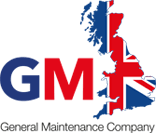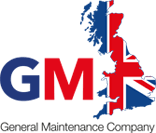Structural property damage can decrease the value of your property portfolio and affect the safety of your tenants. Property maintenance will help prevent property damage and protect your investment. Our latest blog shares information on how to identify issues which could lead to long-lasting structural property damage.
Damp properties and leaking roofs
Prevention is always better than cure when it comes to damp in your property portfolios. Damp and blotchy patches on the wall, wet and crumbly plaster and the presence of fungus or mildew are all signs that your property needs some TLC. Often in tenanted properties the occupants will notify the landlord of any damp problems, however in order to protect your investment the source of the damp must be identified and dealt with as quickly as possible.
A number of common causes of damp are easily dealt with providing they are done so proactively. Roof repairs are an essential part of property maintenance, as loose or missing roof tiles can cause water to seep in. Replacing loose tiles before leaks cause structural issues is much more cost effective than replacing rotting roof timbers. Other potential sources of damp include faulty roofing or rooftop moss which retains moisture, leaking downpipes and overflowing gutters.
Woodworm
Woodworm season is from May to September, and the signs of woodworm can be identified by the round or oval shaped exit holes which they leave in timber, crumbling or weakened wood and the presence of woodworm larvae and beetles. More in depth information on identifying a woodworm infestation can be found here.
If left untreated woodworm can cause seriously weaken the timber of a property, causing structural damage. It is essential that any signs of woodworm are assessed by experienced surveyors, and that action is taken to remedy the problem. Here at GMC we have a network of UK wide property contractors and are able to carry out full property inspections when it comes to woodworm, damp problems or any other structural issues. We can also ensure that any recommended treatments and timber replacements are carried out efficiently without requiring the presence of the Landlord.
Japanese Knotweed
It is an offence to allow Japanese Knotweed to spread, but as a property owner you are not legally obliged to remove or control these plants as long as they do not grow onto neighbouring properties. Due to the nature of Japanese Knotweed it is important to be able to identify the plant. If you are aware of Japanese Knotweed on your property it is recommended that you put a barrier in place to prevent it from encroaching on a neighbouring property. You should also make the owners of any neighbouring properties aware that you have Japanese Knotweed and keep them informed of any treatment you have planned.
This invasive plant can grow up to 3 metres tall and produces thick and extensive roots known as rhizomes. When the roots of a Japanese Knotweed plant grow and expand they will exploit any weaknesses or cracks that a property has, which can result in severe structural damage. Additionally, in search for moisture Japanese Knotweed roots have also been known to interfere with piping, causing blockages and damage to underground water pipes and cables. Extra precautions must be taken when the plant is removed from a property as failing to dispose of it correctly may lead to prosecution. It is essential that no soil is spread within a 10 metre radius of the plant as the root system of a Japanese Knotweed can grow up to 7m from the infected site.
Preventing damage from Japanese Knotweed
Alongside issues such as damp and structural defects property surveyors will take into account Japanese Knotweed damage into their assessment of a property. Once a potentially hazardous plant has been identified you will need an expert to implement a Japanese Knotweed management plan in order to prevent any further property damage. If you intend to purchase or sell an affected property do not undertake a Japanese Knotweed treatment plan which can not be guaranteed, as mortgage lenders or potential investors will need the assurance that the problem is under control.
Here at GMC we can implement a Japanese Knotweed Management plan and provide an insurance backed guarantee, this will give you peace of mind that the problem is being dealt with, your investment is safe and provide you with the documentation that most mortgage lenders require.
Structural damage caused by tree roots
As with a number of of invasive plants and overgrown tree roots roots regular garden maintenance will help you be proactive even if your property portfolio is too vast for you to visit each property individually. The experienced gardeners contracted by GMC will be able to identify areas which need to be dealt with by a specialist, and we are able to take the matter in hand and organise specialist tree reports carried out by a member of the Arboricultural Association.
With GMC your properties are in safe hands
If you manage a large property portfolio staying on top of individual property maintenance requirements can be challenging. Here at GMC we can help ensure your property is an asset, not a liability. Our regular cleaning, gardening service and maintenance teams will be your extra eyes and ears, informing us of any issues which may affect the value of your properties. For extra peace of mind we also offer regular property inspections for untenanted void properties helping you ensure your investment stays safe.
To find out about the extent of our services and how we can help you with your property portfolio please call our team on 01903 721020 or email info@genmaint.co.uk

 Welcome To The General Maintenance Company
Welcome To The General Maintenance Company


Sorry, the comment form is closed at this time.